Baby’s breath belongs to the genus Gypsophila. These delicate flowering plants are part of the carnation family, Caryophyllaceae. Native to a vast region encompassing Africa, Australia, Eurasia, and the Pacific Islands, Gypsophila boasts remarkable diversity, particularly in Turkey.
In fact, Turkey is a hotspot for Gypsophila diversity, hosting approximately 35 unique species. Some of these varieties have been successfully introduced to other regions.
The botanical name for baby’s breath, Gypsophila, literally means “loving gypsum,” a nod to the mineral-rich soil favored by some species.
The origin of the common name is less clear. One theory suggests it stems from the tradition of gifting baby’s breath at baby showers, while another attributes it to the flower’s delicate appearance, reminiscent of a newborn’s innocence.
Baby’s Breath Plants
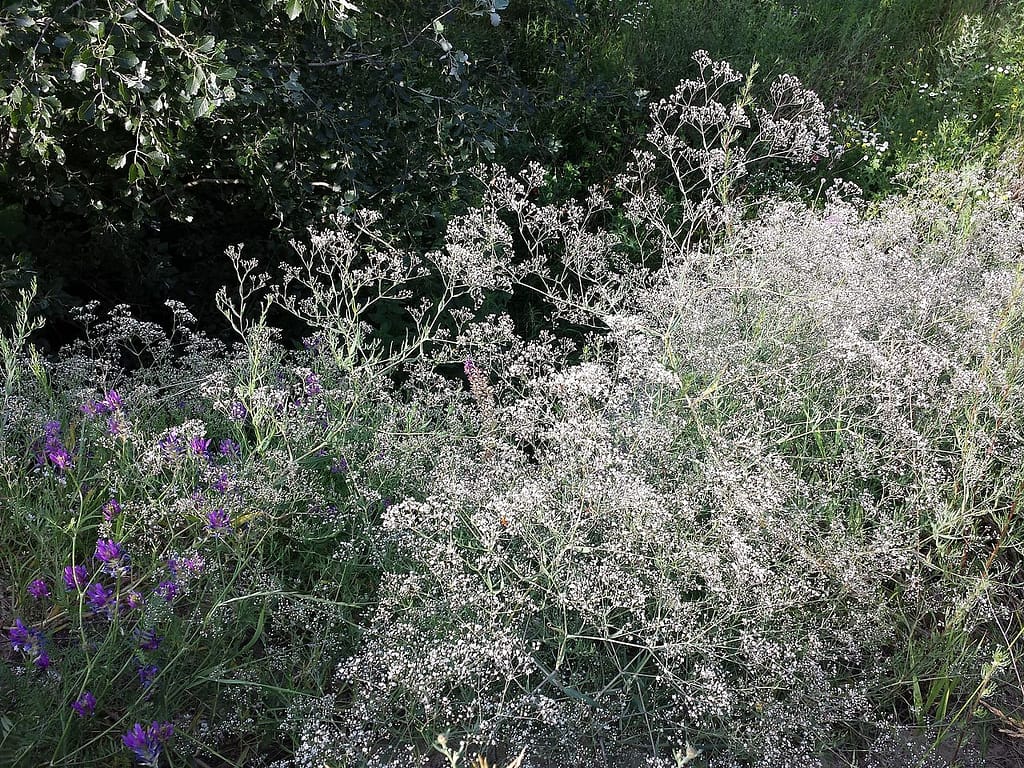
Stefan.lefnaer, Gypsophila paniculata sl17, CC BY-SA 4.0
Baby’s breath plants grow fast. They have tiny flowers with loose clusters. These little, delicate blooms in shades of light pink, white, or yellow, are beloved choices for floral arrangements and bouquets.
Known for its airy, cloud-like appearance, this charming plant adds beauty to any garden. Easy to grow and perennial, baby’s breath plants return year after year, creating a captivating display of cheerful blossoms.
Baby’s breath plants, depending on species, vary in size, ranging from compact 6-inch specimens to towering 8-foot varieties. Their spread can reach 4 to 5 feet. Some types even grow as groundcover, creating a delicate carpet of blooms in sunny areas.
Baby’s breath can be either an annual or a perennial, depending on the variety. Annual types will perish with the winter’s frost but often self-seed, potentially returning the following year. Perennial baby’s breath may die back to the ground in autumn, but their hardy roots survive winter is cold, ensuring a fresh bloom the next season.
Toxicity
Baby’s breath contains mild irritants that can affect both humans and animals. According to the University of California, Gypsophila paniculata can cause itching, dermatitis, and skin irritation. To protect yourself, always wear gloves when handling baby’s breath, especially when pruning.
Baby’s Breath Flowers
Baby’s breath plants produce blossoms that are typically white or pink, forming clouds of delicate flowers. Each flower can have five petals, either single or double, and they grow in loose clusters known as panicles. The flower heads range in size from 3 to 6 inches (7.5 to 15 cm) across.
The popular annual baby’s breath (Gypsophila elegans) typically reaches a height of 2 feet, while the common Gypsophila (Gypsophila paniculata) can grow up to 3 feet tall. Creeping baby’s breath (Gypsophila repens) is a ground-hugging or mat-forming plant. Its flowers grow to a height of just 8 inches (20 cm).
Gypsophila species typically bloom from summer through fall, usually between June and October, depending on your location. While enjoying this extended flowering period, it is important to note that a baby’s breath grown from seed requires patience; it usually takes three years before the plant reaches maturity and produces flowers.

4028mdk09, Schleierkraut und rote Rose, CC BY-SA 3.0
The baby’s breath flowers serve as staples in the floral design world. Florists commonly use them as fillers in floral arrangements or displays. The delicate white variety creates a striking contrast against bold blooms like roses, tulips, and gerberas. These flowers are also a popular choice for bridal bouquets and wedding floral arrangements.
Not all Gypsophila species are fragrant. In fact, many, including the well-known Baby’s Breath (Gypsophila paniculata), have little to no scent. Some varieties even have a smell that has been likened to baby’s spit-up or sour milk.
Dry Flower Arrangements
Baby’s Breath is a popular choice for dried flower arrangements. Its delicate blooms retain their beauty long after cutting, typically lasting between five and fourteen days in a vase. To extend their life even further, consider drying these flowers indoors for a truly enduring floral display.
To dry these flowers, select stems measuring 12 to 18 inches long with about half their buds open. Gently bundle five to seven stems together with twine and hang them upside down in a dark, warm, and well-ventilated space. Allow five to six days for the flowers to completely dry and become papery to the touch.
Growing Baby’s Breath Plants
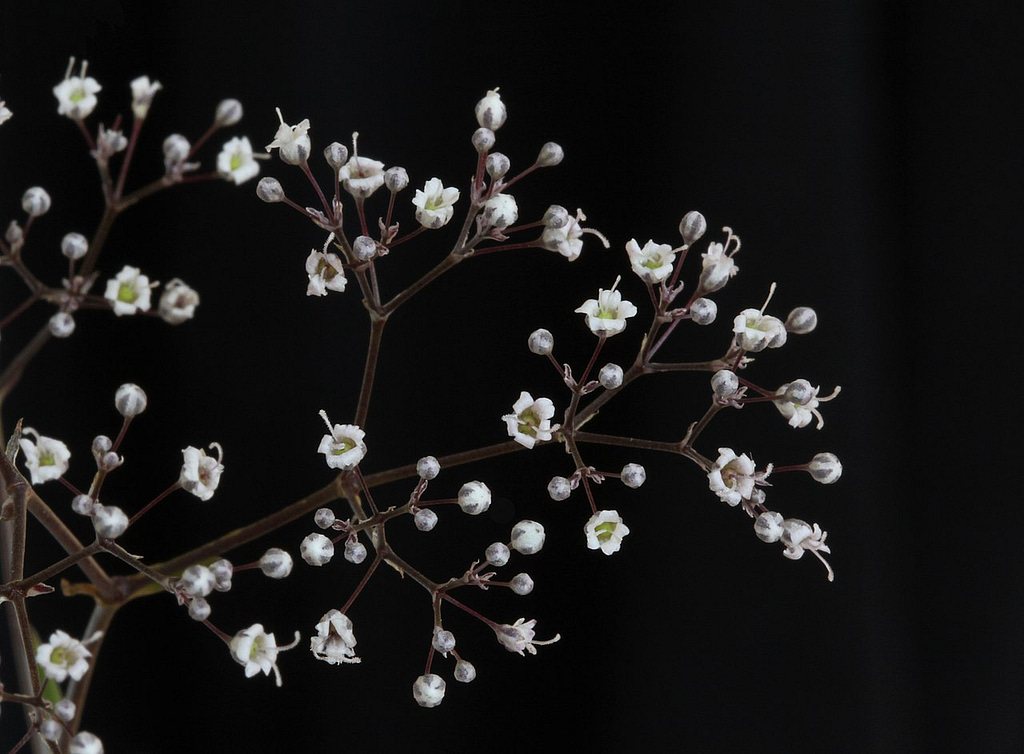
Avenue, Close-up of baby’s breath (Gypsophila paniculata) flowers, CC BY-SA 3.0
Sun Light
Baby’s breath thrives in full sun, ideally receiving at least six hours of direct sunlight daily. While it can tolerate some shade, especially the intense afternoon heat, excessive shade leads to leggy growth and reduced flowering. For optimal results, plant in a southern location that offers partial afternoon shade.
Soil
Baby’s breath adapts to various soil types but thrives in well-draining conditions. Sandy soil is ideal, while heavy clay soils should be avoided. For clay soil, consider planting in raised beds or containers. This plant prefers slightly alkaline soil (pH 6.0 – 8.0). If your soil is acidic, increase the pH by adding garden lime.
Water
Baby’s breath is drought-tolerant and prefers dry soil conditions. While young plants benefit from consistently moist soil, established ones require minimal watering, except during extended dry spells. Overwatering can be fatal, leading to root rot.
Temperature and Humidity
Baby’s breath is adaptable to a wide range of temperatures, thriving in USDA zones 3 to 9. While cold tolerance varies between species, perennial varieties are particularly hardy, able to withstand even sub-zero winter conditions.
These plants prefer to dwell in drier conditions and struggle in humid environments. To prevent problems, ensure your plant has excellent soil drainage and avoid overly moist soil.
Types of Baby’s Breath Plants
Some different varieties of baby’s breath plants include:
G. paniculata ‘Bristol Fairy’: This variety features delicate double white flowers, each about 1/4 inch in diameter. This variety forms mounding plants that reach approximately 2 to 3 feet in height and width.
G. paniculata ‘Perfekta’: This is a larger variety, reaching heights and widths of up to 3 feet. Its double flowers are similar to ‘Bristol Fairy’ but boast approximately twice the size.
G. paniculata ‘Compacta Plena’: This is a compact cultivar, forming mounded plants that reach approximately 15 to 18 inches in height and width. Its flowers closely resemble those of the ‘Bristol Fairy’ variety.
G. elegans: This variety is often labeled an annual. However, it sometimes, readily self-seeds and grows back year after year. Distinguished by its notably larger, open blooms compared to other baby’s breath varieties, it’s a standout in the garden.
G. paniculata ‘Viette’s Dwarf’: This is a popular compact cultivar, reaching only 12 to 15 inches in height and width. Its low stature typically eliminates the need for staking. This variety features double flowers that open a soft pink and gradually fade to white.
Propagating Baby’s Breath Plants

The Baby’s breath plants can be propagated from stem cuttings or seeds. However, if your plant is protected by a plant patent or is a grafted cultivar, propagation is restricted. In such cases, purchasing seeds is the recommended method. Seeds are widely available in the market for numerous perennial and annual varieties.
Propagating from Cuttings
The easiest way to propagate a baby’s breath plant is through cuttings. In fact, cuttings grow faster than those started from seed. Select healthy stems that are 3 to 5 inches (7.5 to 12 cm) long and root them indoors before transplanting.
1.) Prepare the Cuttings: Take your cut stems and remove all leaves from the lower third. Place the ends in small containers filled with fertile, alkaline soil. Lightly mist the soil on a regular basis to maintain moisture without overwatering.
2.) Rooting Process: After about four weeks, the cuttings should develop roots. After that, they are ready to be transplanted into the ground.
3.) Transplanting: Plant the rooted cuttings about 12 inches (30 cm) apart in the sunniest part of your garden. Water the ground to encourage growth. Ensure the soil remains moist but not soggy until the new plants are well-established.
Propagating from Seeds
Growing a baby’s breath from seeds is quite simple. You have two options: sow the seeds directly in the garden after the last frost or start them indoors.
Direct Sowing: Choose a garden area that enjoys ample sunlight. Sprinkle the seeds gently and cover them with a thin layer of the ground soil. Water gently to keep the soil moist. Once the seedlings emerge, thin them to ensure they are spaced 12 inches (30 cm) apart.
Indoor Sowing: Start the seeds indoors in a light, high-quality potting mix. Cover them with a seed-starting formula. Begin this process six to eight weeks before you plan to transplant them outdoors in the spring. Seedlings typically appear within 10 to 14 days.
Once the baby’s breath seedlings emerge, move the potting trays or pots to a sunny spot. To ensure they receive 16 hours of light each day, supplement with plant lights if needed. When the risk of frost has passed and the seedlings have developed at least two pairs of leaves, they are ready for transplanting into your garden.
Before planting in the ground, gradually acclimate the seedlings by placing them in a sheltered outdoor location for a week. This hardening process prepares them for outdoor conditions. Afterward, transplant the baby’s breath plants into the garden, spacing them 12 inches (30 cm) apart in well-drained, organically rich, alkaline soil.
Other Propagation Methods
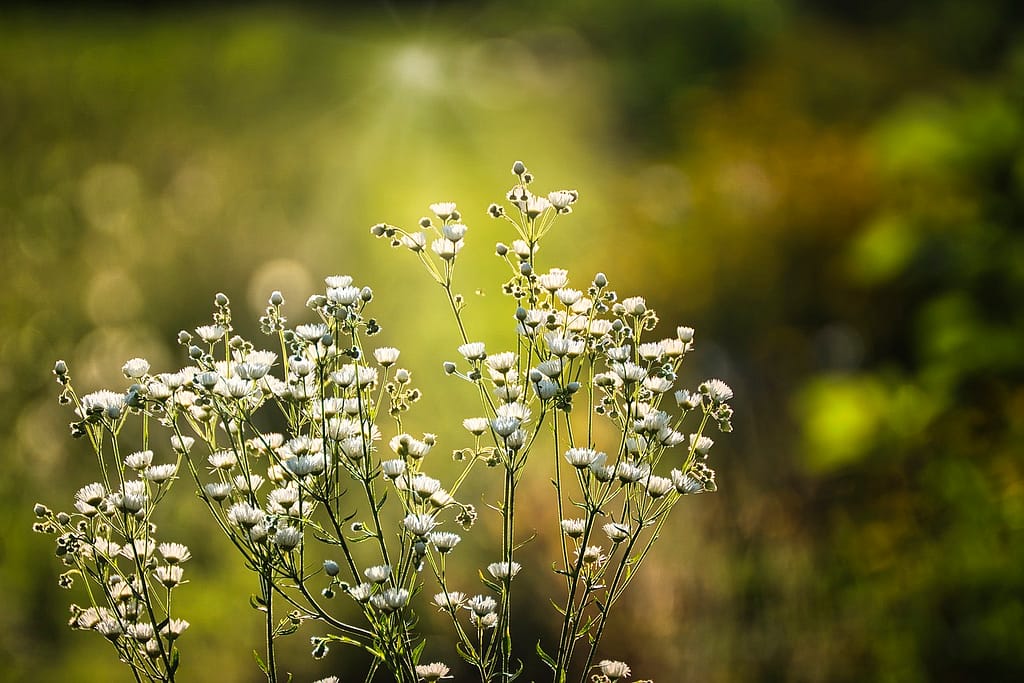
Propagating from Nursery Transplants
Another option for growing a baby’s breath is to purchase nursery transplants. This is a quicker method if you do not have the time to wait for seeds to germinate or if you lack an existing plant to take cuttings from
Before planting the nursery-bought baby’s breath, prepare the soil thoroughly. Loosen the soil to a depth of 6 to 12 inches and incorporate compost or leaf Mold. Dig individual holes for each plant, ensuring they are deep enough to accommodate the root ball.
Carefully position the plant in the hole so the soil line matches the plant’s original soil level. Fill in any gaps with soil and gently firm it around the roots.
Water the plants as described earlier in this article. To help retain moisture and suppress weeds, apply a two-inch layer of mulch around the base of the plants.
Division
Dividing a baby’s breath plant is not recommended for propagating new plants. The process can easily damage the plant’s delicate roots, often killing it. To successfully grow a new baby’s breath, it is best to start from seeds or cuttings.
Caring for Baby’s Breath Plants
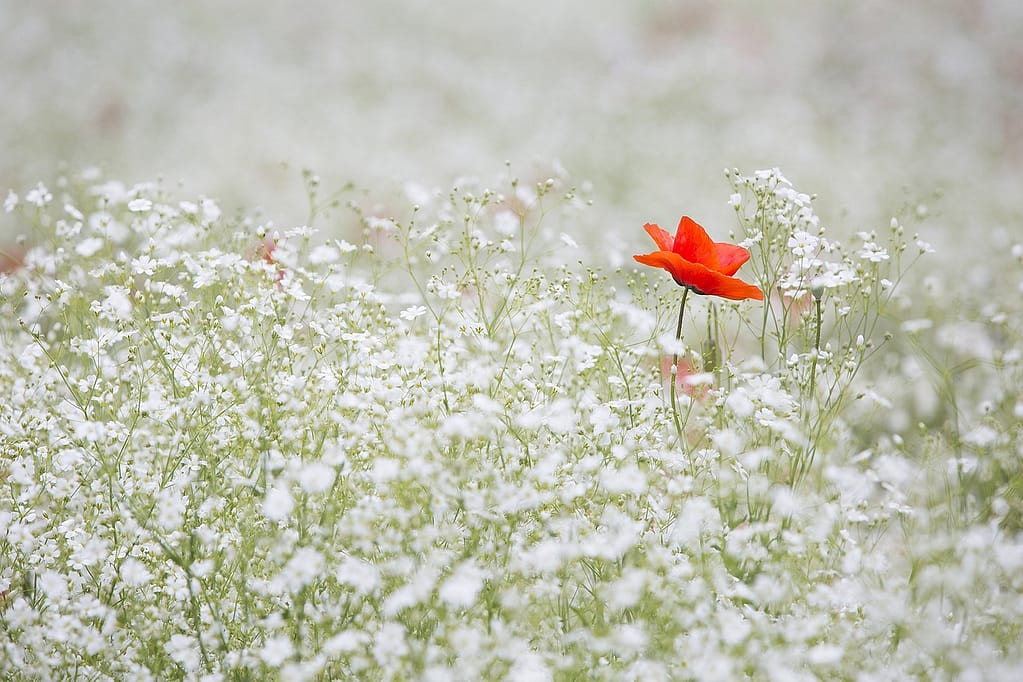
Fertilizer
These plants, typically, are not heavy feeders, and too much fertilizer can lead to weak and leggy growth. For optimal health and abundant blooms, simply incorporate compost into the soil every spring.
Pruning
Baby’s breath requires minimal pruning. To maintain its bushy shape, simply trim long, leggy stems. Deadhead spent blooms by cutting back to the next set of leaves to encourage continuous flowering. After the first flush of blooms, light pruning can help preserve the plant’s shape and potentially stimulate additional flowering.
For perennial varieties, cut back stems to about an inch above the ground in the fall to prepare the plant for winter. It will regrow in the spring.
Overwintering
These plants are quite cold-hardy and can withstand some cold temperatures. For extra protection during harsh winters, consider adding a layer of mulch around the base of the plant to insulate the roots.
Repotting
Annual varieties do not require repotting. Perennial varieties, however, need special care. While they are cold-hardy, potted ones cannot tolerate freezing temperatures. To protect them, move the container to a designated spot in the ground or nest it within a larger container.
Once the root system has matured, typically in spring, repot your plant using fresh potting soil. Choose a pot slightly larger than the current one to encourage healthy growth.
Common Pest & Plant Diseases
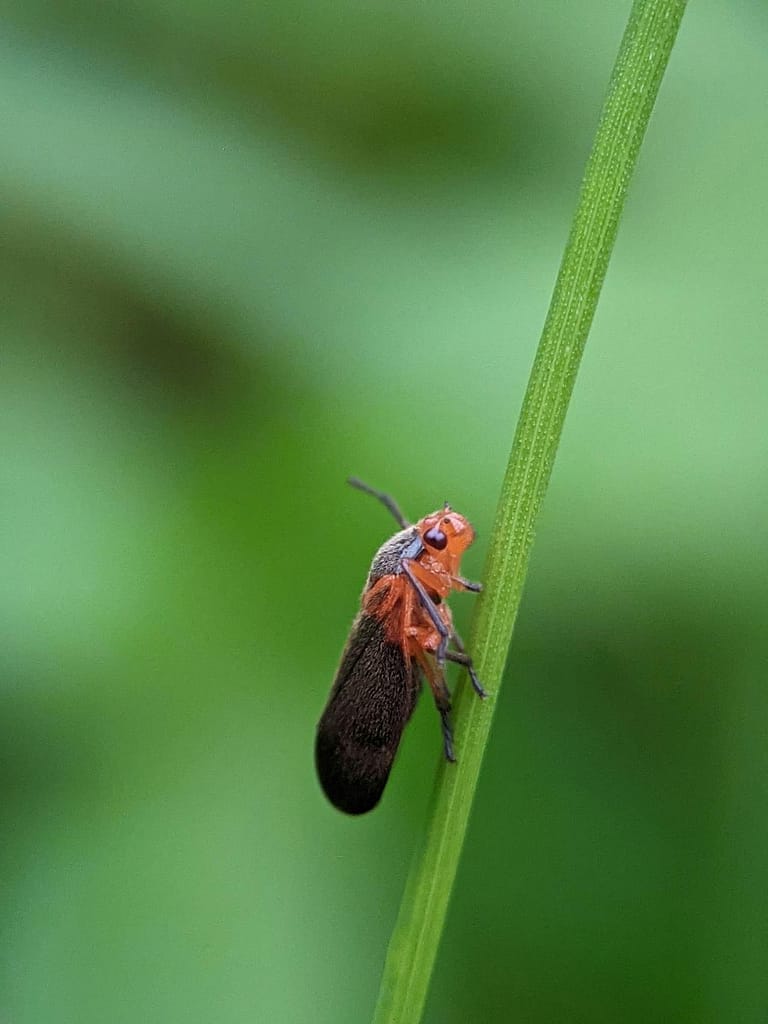
Baby’s Breath plants can be susceptible to several pests and diseases. Common pests include leafhoppers, aphids, slugs, Japanese beetles, and even rabbits. Signs of a pest problem include discolored or hole-ridden leaves.
While chemical treatments exist, there are also organic options such as soap or citrus sprays.
As for diseases, root rot and other fungal infections are common issues, often caused by overwatering. Proper care and attention to watering can help prevent these problems.
Quick Reference Guide
| Botanical Name | Gypsophila spp. |
| Common Name | Baby’s Breath |
| Family | Caryophyllaceae |
| USDA Hardiness Zones | 3 – 9 |
| Plant Type | Perennial, Annual |
| Sun Light Exposure | Full Sun |
| Soil Type and pH | Well-Draining, Alkaline, Neutral (pH 6.0 – 8.0). |
| Mature Height and Spread | 6” to 8 ft. (15 cm – 2.4 m) Height and up to 4 ft. (1.2 m) wide |
| Bloom Time | Summer, Fall |
| Flower Colours | White, Pink |
| Origin | Africa, Australia, Eurasia, and the Pacific Islands |
Frequently Asked Questions
Purchasing baby’s breath flowers often signifies purity, sincerity, and various forms of love. They also symbolize innocence, making them a perfect gift for baby showers and other special occasions. When given, they convey thoughtfulness and affection.
Germinating a baby’s breath seeds requires a bit of patience. So, it is not mostly said to be beginner-friendly to grow.
Start annual varieties indoors 6-8 weeks before the last frost. For perennials, sow seeds 8-10 weeks before transplanting in either early spring or fall.
Though indoor conditions are not ideal, you can grow them in containers, as they require full sun.
While these plants do enjoy afternoon shades, they prefer to grow in fully sunny conditions. Hardy in USDA zones 3 to 9, baby’s breath thrives in most of the United States. Surprisingly adaptable, it tolerates sandy, poor, or less fertile soil conditions
Not all Gypsophila species are fragrant. In fact, many, such as the popular Baby’s Breath (Gypsophila paniculata), have little to no scent. Some varieties are even said to smell like baby’s spit-up or sour milk.
Curious Contemplations
Blooming Beauties: Growing Shrimp Plants
Golden Shrimp Plants: Tropical Treasures for Your Garden




